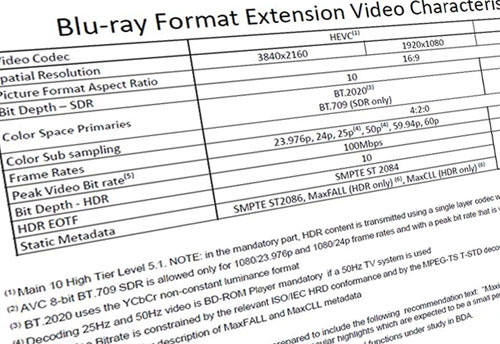The Blu-ray Disc Association (BDA) has apparently sounded the death knell for 3D movies, according to a leaked PowerPoint slide that purports to show the near-finalised specifications for its next-generation Ultra HD Blu-ray format.

According to the slide, which was posted by Japanese tech site AV Watch, the soon-to-be-released Ultra HD Blu-ray format ensures that future media will be able to handle higher resolution content of up to 3840×2160, plus higher frame rates of up to 60fps. In addition it will also support a much wider colour gamut than the current Blu-Ray disc format, up to Rec.2020 or BT2020 colour space, 10-bit colour depth, and a peak video bit-rate of 100Mbps.
While it’s great news for anyone who’s itching to get their hands on native 4K content to watch, the proposed specs won’t please everyone – because there seems to be no mention whatsoever of 3D in ultra high-definition (UHD) resolution.
Admittedly 3D TV has proven itself to be a bit of a lame duck in the living room – it’s not as if there’s legions of fans out there screaming for it, but this piece of news will further aggravate the few aficionados of stereoscopic films out there. The implication is that viewers will be forced to choose between watching their movies at either 4K in 2D, or regular full HD resolution in 3D, despite the fact that HDMI 2.0 has more than enough bandwidth to support 3-D at 4K Ultra HD resolution.
That may be so, but given the overall disappointing reception 3D has had among consumers, it’s hardly surprising. The overall consensus with most home viewers is that 3D just doesn’t quite cut the mustard, mainly because no one enjoys wearing those ridiculous goggles while sitting on the couch. In other words, movie makers just can’t be bothered persevering with something that few people like, which means the current 1080p frame-packed 3D Blu-rays will be the highest resolution for whatever handful of 3D fans left…
Source: AV Watch Japan